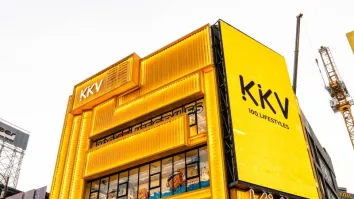
Alfred Choy on online and physical stores: Balancing both is key to a retailer’s success
Despite digitisation efforts amongst retailers, SAP’s sales director believes that physical stores are still important for delivering an end-to-end customer experience.
Alfred is SAP’s sales director for customer data management and marketing for the Asia Pacific and Japan. With over ten years of experience in the marketing technology industry across APAC, he specialises in the B2C industry, particularly in e-commerce and retail across the region.
Alfred was one of the keynote speakers in the recently concluded Customers take center stage: Using innovation to grow your business virtual roundtable. He brought with him his expertise in digital marketing, technology, and operation to help customers overcome business challenges and drive business growth. Retail Asia spoke with Aditya as he shared his thoughts on digital transformation during the COVID-19 pandemic, retail industry trends in the Asia Pacific, increasing sales and brand loyalty in customers, and consumer behaviour and spending during the COVID-19 pandemic.
What's your advice to retail stores that are starting their journey towards digitisation amidst the COVID-19 pandemic? What about those that have already started their digital transformation?
Many retailers have switched their focus to online to make sure that their online revenue is growing faster than retail sales drop.
Does this mean that online will take over physical retail stores? Probably not, mainly because in countries like Singapore, retail stores are still important for delivering an end-to-end customer experience. People still want to walk around in shopping malls and still like to “touch and feel” the actual products.
I think that having a nice balance of both online and physical stores will be the key here. It’s not just about investing in digital transformation, but also measuring the success and making sure that there is continuous revenue growth across different sales channels. This gives a holistic view of business and customers across online and offline channels.
What are the trends that you have observed in Asia-Pacific’s retail industry last year?
The pandemic is the driver and accelerator of digital transformation, with almost all retailers now online with multiple online footprints.
The retail industry has doubled down its digital investment since last year and focused on the “getting it done” approach because of the urgency of the digital initiative. Moving forward to 2021 and 2022, retailers may start looking at a “doing it right” approach by looking at the investment portfolio and consolidating multiple investments to maximise retail and efficiency.
Many brands were thinking about selling via a marketplace or building their own online store. But, why not both?
Which would play a significant role(s) in changing the prevailing retail landscape?
Generally, digital transformation in the Asia Pacific is still at its early stage compared to other parts of the world. Revenue generation will remain the key focus under the current situation. Businesses should always do what’s best for the customers and the way of transformation will follow along.
And because of the increasing number of digital touchpoints, the siloed customer data becomes more challenging for retailers to increase customer lifetime value. Moving forward, the related investment efficiency will become an important topic as it would largely affect the business cash flow and the ability to build a long-term customer engagement plan for sustainable revenue.
As sales director for Customer Data Management and Marketing for SAP, how can businesses drive more sales and brand loyalty amidst the crisis?
When we talk about more sales and brand loyalty, it has to link up with the customer life-cycle and their lifetime value. Businesses need to balance the effort and strategies across acquisition, conversion, and retention.
There’s no doubt that acquisition is the key for businesses that have just started their online store, and this will set the foundation for its success. However, the customer conversion and retention strategy should be in place from day one. Customer acquisition costs five times more than customer retention. Even if not all the online traffic will make a purchase on their first visit, how do businesses gather their data and save four or five times the cost of getting the same customer visiting again?
How has the pandemic changed consumer behaviour and spending, locally and globally?
Most of the consumers are now spending more and more online. We can see the drop in mall footfall and increase in website traffic—and this is happening to almost all the age groups.
The pandemic has broken all the international borders and all consumers are buying from everywhere. Consumers are simply doing their own online research and trying to look for the lowest price available. For example, by comparing local (even with all the logistics cost), some products are maybe cheaper in the US or Japan.



















 Advertise
Advertise





